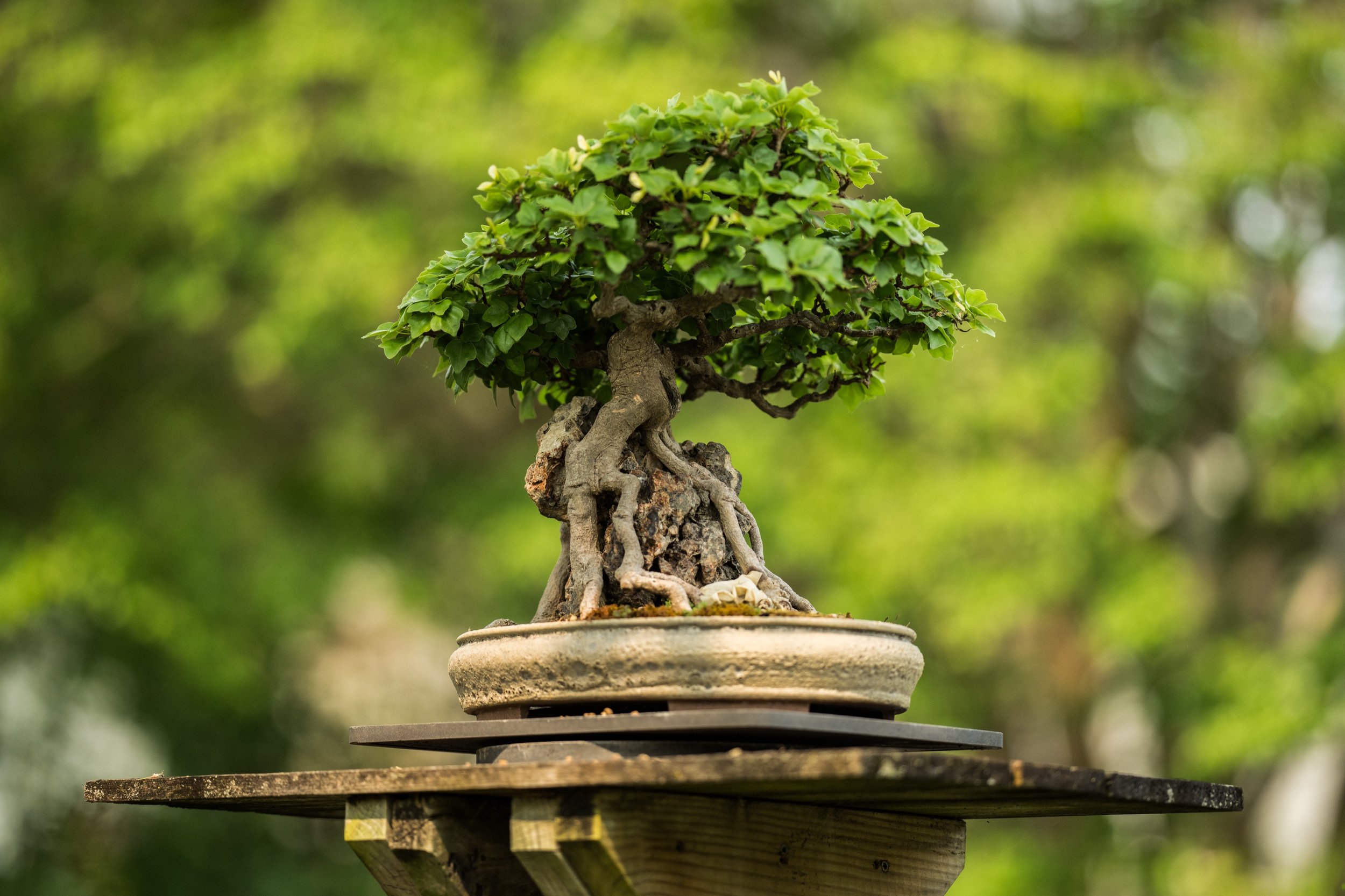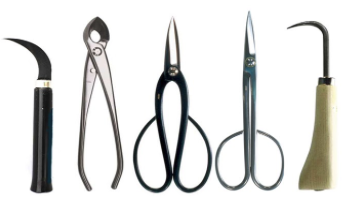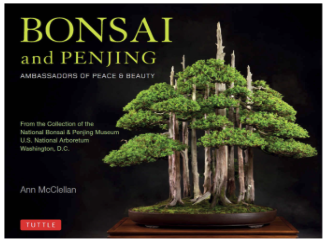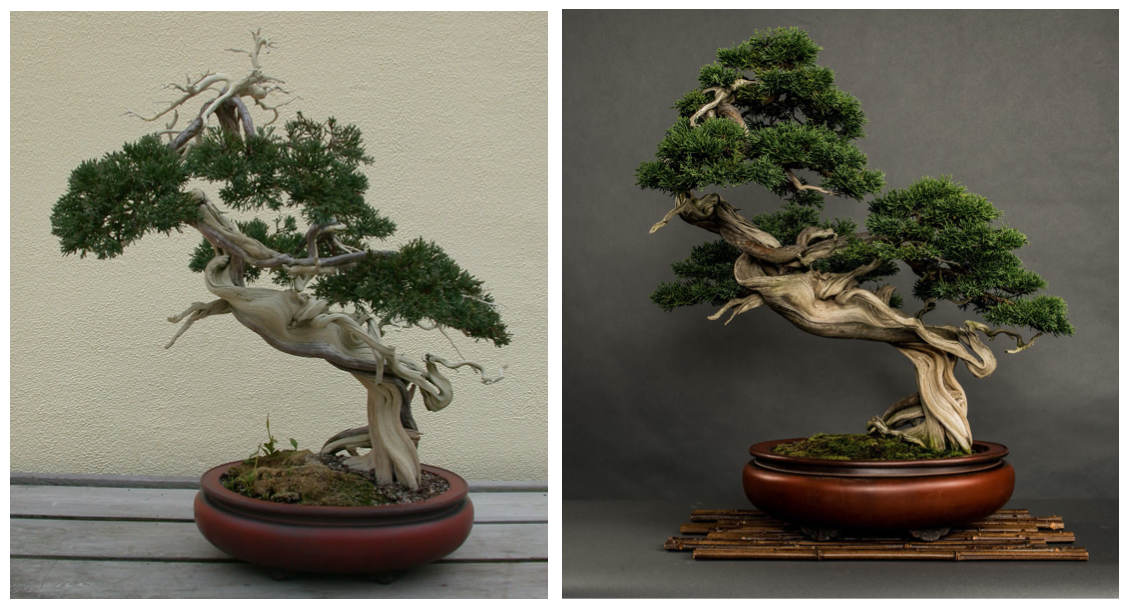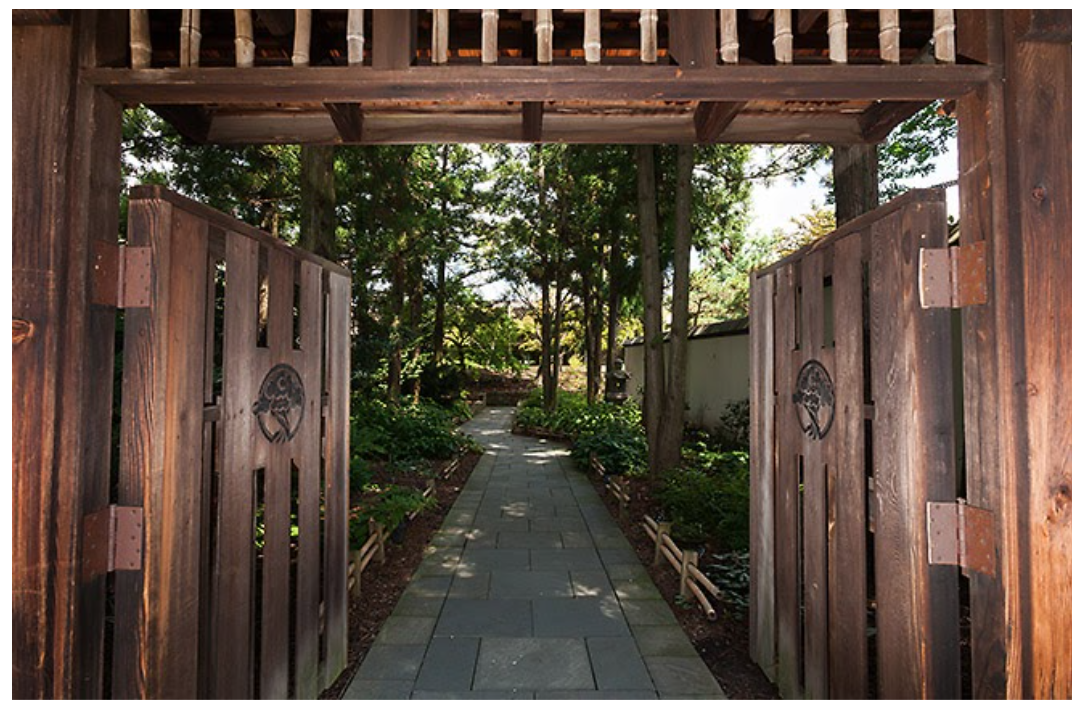A trident maple in its full fall splendor
By the end of October in D.C., the trees have begun to lose their summertime greenery. The colors that have long dominated the spring and summer here are in flux. The chlorophyll that defined the color palette of nature is waning, and brilliant yellows, oranges and reds emerge. I visited the National Bonsai & Penjing Museum on the grounds of the U.S. National Arboretum one afternoon to see these fall colors in the fading light of an unseasonably warm day.
Photographing at this time of year feels like a gift, an exuberant offering of beauty and color that crescendos here in November then quickly fades as we settle in for the browns and grays of winter. The shortness of the days gives us golden hours in the late afternoon, bringing warm light from a setting sun.
LEFT: This photo was taken with the camera more or less on an even exposure. RIGHT: For this photo, I underexposed by a couple of stops (switching shutter speed from 1/125 to 1/500) and increased the contrast of the image in Photoshop.
As the sun sinks lower in the sky, I like to look for little pockets of light that have filtered through the trees, illuminating just a spot of a branch or particularly colorful leaf. If you’re able to adjust your camera’s exposure, you can deliberately underexpose the image a bit to deepen the colors and darken the background, as I’ve done above.
Photographing into the sunlight gives the opportunity to see the colors of fall backlit and illuminated.
The vibrance of the colors is magnified with morning dew or a bit of rain. On the gloomiest, rainiest days, there are great images to be made. As the old photographer’s saying goes, “Bad weather makes for good photos.”
At dusk, the light softens and we get these beautiful, subtle tones on a ginkgo tree that has just begun to turn yellow.
While I love golden light, I think dawn and dusk are the most interesting times to photograph. The light has cooled to a bluish tone, and the warm colors of the leaves stand out even more against their environment. In the gloaming, the hard shadows from direct light are gone and for just a brief time the drama of the sunlight fades and there are beautiful, subtle photos to be made.
I placed a beautiful maple tree to serve as a splash of color to balance the wonderful stark white wall that shows off the tree in the background. Fall color can be part of your photographic palette and a compositional tool, it doesn’t always have to be the center of attention.
The trees changing colors at different times can be a great opportunity to show contrast and play with color. A particularly vibrant tree might make for an interesting macro (close-up) image, but you might also consider placing it in context. Sometimes we appreciate colors in nature more richly when they are photographed in comparison to their less vibrant surroundings.
I was fascinated by these beech leaves, which showed the entirety of fall's transformation, from verdant green to the brown of winter with a pale yellow in between.
A macro lens allows you to use depth of field as a visual tool to sort out what you want to emphasize and not emphasize. I loved the distant silhouette of the cedar elm’s trunks that subtlety frame its foreground leaves.
With the setting sun, a quiet comes to the Arboretum. While the museum remains closed, the dedicated caretakers of these trees continue their work each day. These days, they are preparing the space for winter and for the time when they can reopen the doors for visitors to enjoy these special trees in person once again. Whether you have a bonsai collection of your own, or can simply see fall colors out your window, it’s a great time to pack a bag and walk through nature to interpret its splendor.
As a photographer who now makes a living snapping pictures of some of the world’s most influential figures, Stephen Voss didn’t always know that photography could be more than a hobby. Once a bonsai novice, he certainly didn’t think he would publish a photography book of bonsai.
Now that he’s an accomplished photographer, Voss wants to share his “tricks of the bonsai photography trade.” This entry is part of his regular guest blog series, “Photographing Bonsai with Stephen Voss", published on NBF’s blog, covering everything from lighting, angles and mindset needed when photographing the trees. This has been a special entry in this series given the times.
Sign up for our newsletter and follow us on Facebook and Instagram to never miss one of his entries! Read his last entry here.



